Coffee powder is a fine, ground form of roasted coffee beans used to make instant or brewed coffee. If you’ve ever wondered what is coffee powder, this guide explains its types, uses, and benefits.
Coffee powder offers convenience for coffee lovers. Unlike traditional coffee, it dissolves quickly in hot water. This makes it a popular choice for busy mornings. But what exactly goes into making coffee powder? How does it retain that rich coffee flavor?
In this blog post, we’ll explore the origins and process behind coffee powder. You’ll learn about its benefits and why it might be a good addition to your pantry. So, grab your favorite mug, and let’s dive into the world of coffee powder.

Credit: outdoorherbivore.com
Introduction To Coffee Powder
Coffee powder is a popular beverage ingredient used to make coffee. It is made from roasted coffee beans that are ground into a fine powder. This powder is then brewed to create the coffee drink that many people enjoy. The flavor and aroma of coffee powder can vary greatly depending on its origin and type. Understanding coffee powder can help you appreciate your cup of coffee even more.
Origin Of Coffee Powder
Coffee has a rich history that dates back centuries. The origin of coffee powder can be traced to ancient Ethiopia. It is believed that coffee was first discovered there. Local legends say a goat herder named Kaldi noticed his goats became energetic after eating berries from a certain tree.
These berries were coffee cherries. The knowledge of coffee spread from Ethiopia to the Arabian Peninsula. By the 15th century, coffee was being cultivated in Yemen. It was here that the process of roasting and grinding coffee beans into powder began. This method allowed for a more consistent and enjoyable coffee experience.
Important milestones in the history of coffee include:
- 15th century: Coffee cultivation begins in Yemen.
- 16th century: Coffee spreads to Persia, Egypt, and the Ottoman Empire.
- 17th century: Coffee reaches Europe and becomes popular in cafes.
Each region developed its own unique methods of processing and brewing coffee. This contributed to the diverse range of coffee powders we have today.
Types Of Coffee Powder
There are many types of coffee powder available. These can be categorized based on factors such as grind size and roast level. The grind size affects how quickly the coffee extracts during brewing. Common grind sizes include:
- Coarse: Used for French press and cold brew.
- Medium: Suitable for drip coffee makers.
- Fine: Ideal for espresso machines.
The roast level also plays a significant role in the flavor of coffee powder. Roast levels range from light to dark. Light roasts retain more of the bean’s original flavors. These can be fruity or floral. Dark roasts have a bolder, more robust taste.
Here is a comparison of different roast levels:
| Roast Level | Flavor Profile | Color |
|---|---|---|
| Light | Fruity, Floral | Light Brown |
| Medium | Balanced, Sweet | Medium Brown |
| Dark | Bitter, Smoky | Dark Brown |
Choosing the right type of coffee powder depends on your taste preferences. Experimenting with different types can help you find your perfect cup of coffee.
Production Process
Coffee powder is a fine, dry substance made from roasted coffee beans. It is used to brew coffee by mixing it with hot water. The production process of coffee powder is intricate and involves several stages. This ensures that the final product is rich in flavor and aroma. Let’s explore the journey of coffee beans turning into powder and the various grinding techniques used.
From Bean To Powder
The journey starts with the harvesting of coffee cherries. These cherries are picked when they are ripe. Inside each cherry, there are two coffee beans. The beans are then extracted, cleaned, and dried.
After drying, the beans are roasted. Roasting is a crucial step that gives coffee its unique flavor. The temperature and time of roasting affect the taste. Light roasts are milder, while dark roasts have a stronger flavor.
Once roasted, the beans are cooled and then ground into a fine powder. This powder can vary in texture, from coarse to very fine. The texture depends on the brewing method it is intended for.
The entire process involves several stages:
- Harvesting of coffee cherries
- Extraction and drying of beans
- Roasting of beans
- Cooling and grinding of roasted beans
Grinding Techniques
The grinding process is vital for making coffee powder. The grind size affects the flavor and strength of the coffee. Different brewing methods require different grind sizes.
Here are some common grinding techniques:
- Coarse Grind: This is used for methods like French press. The particles are large, which allows water to flow through them slowly.
- Medium Grind: Suitable for drip coffee makers. The particles are smaller than coarse grind but larger than fine grind.
- Fine Grind: Used for espresso machines. The particles are very small and allow for a quick brewing process.
- Extra Fine Grind: Ideal for Turkish coffee. The powder is almost like flour in texture.
Different grinders can be used to achieve these textures. Blade grinders are common and affordable. However, burr grinders are preferred for a consistent grind size. They crush the beans between two surfaces, ensuring uniformity.
Choosing the right grind size and technique is essential. It can make or break the coffee experience. Experimenting with different methods can help in finding the perfect grind for your taste.
Varieties Of Coffee Powder
Coffee powder is a popular ingredient used worldwide to prepare a variety of coffee beverages. Made from ground coffee beans, it offers convenience and a rich, bold flavor. There are different types of coffee powder, each with unique characteristics and flavor profiles. Understanding these varieties can enhance your coffee experience.
Arabica Vs Robusta
Arabica and Robusta are the two main types of coffee powder. They differ in taste, caffeine content, and growing conditions.
Arabica coffee powder is made from Arabica beans. These beans have a smooth, mild flavor. They often have hints of fruit and sugar. Arabica beans are grown at high altitudes, which makes them more expensive.
Robusta coffee powder is made from Robusta beans. These beans have a stronger, more bitter flavor. They have a higher caffeine content. Robusta beans are easier to grow and are more resistant to pests.
| Feature | Arabica | Robusta |
|---|---|---|
| Flavor | Mild, sweet | Strong, bitter |
| Caffeine Content | Lower | Higher |
| Price | More expensive | Less expensive |
| Growing Conditions | High altitudes | Lower altitudes |
Specialty Coffee Powders
Specialty coffee powders are made from high-quality beans. These beans are sourced from specific regions known for their unique flavors. Specialty coffee is often organic and ethically sourced.
Types of specialty coffee powders include:
- Single-Origin Coffee: Made from beans sourced from one location. It offers a unique flavor profile.
- Organic Coffee: Grown without synthetic fertilizers or pesticides. It’s a healthier and environmentally friendly option.
- Fair Trade Coffee: Ensures fair wages and working conditions for farmers. It supports sustainable farming practices.
These coffee powders are often more expensive. But they offer a superior taste and ethical benefits. Trying different types can enhance your coffee experience.
Culinary Uses
Coffee powder is a versatile ingredient made from finely ground coffee beans. It is used in many dishes for its rich flavor and aroma. Culinary uses of coffee powder span from baking to enhancing the taste of savory dishes. This ingredient can transform ordinary recipes into extraordinary delights. Let’s explore how coffee powder can be used in baking and infusing flavors in various dishes.
Baking With Coffee Powder
Coffee powder adds a depth of flavor to baked goods. It can enhance the taste of chocolate and other sweet treats. Here are some ways to use coffee powder in baking:
- Chocolate Cakes: Add a teaspoon of coffee powder to the batter. This makes the chocolate flavor more intense.
- Cookies: Mix coffee powder into the dough. This gives cookies a unique taste.
- Brownies: Enhance the richness by adding coffee powder to the mix.
Adding coffee powder to your baked goods can also create interesting textures. Here is a simple recipe addition:
| Recipe | Amount of Coffee Powder |
|---|---|
| Chocolate Cake | 1 tsp |
| Cookies | 1/2 tsp |
| Brownies | 1 tsp |
Next time you bake, try adding coffee powder. It might become your secret ingredient.
Infusing Flavors In Dishes
Coffee powder is not just for baking. It can also be used in savory dishes. Here are some ideas:
- Marinades: Mix coffee powder with spices. This creates a rich, earthy flavor.
- BBQ Sauces: Add coffee powder to your sauce. It gives a deep, smoky taste.
- Stews and Chilis: Enhance the broth with coffee powder. This adds complexity to the dish.
Using coffee powder in cooking can create unexpected and delightful flavors. It pairs well with meats and hearty vegetables. For example, a simple coffee rub for steak:
| Ingredient | Amount |
|---|---|
| Coffee Powder | 1 tbsp |
| Salt | 1 tsp |
| Pepper | 1 tsp |
| Garlic Powder | 1/2 tsp |
Mix these ingredients and rub onto the steak. Cook as desired. This will create a crust with a burst of flavor.
Experiment with coffee powder in your savory dishes. It can surprise you with its versatility.
Health Benefits
Coffee powder is a popular beverage made from ground coffee beans. It is known for its unique aroma and flavor. Many people enjoy it daily for its refreshing taste and energy boost. Beyond its taste, coffee powder has several health benefits. This article will explore the health benefits of coffee powder, focusing on its antioxidants and effects on metabolism.
Antioxidants In Coffee
Coffee powder is rich in antioxidants. These compounds help fight free radicals in the body. Free radicals can damage cells and lead to various diseases. Here are some important antioxidants found in coffee:
- Chlorogenic acid: Helps reduce inflammation and regulate blood sugar.
- Caffeic acid: Supports the immune system and has anti-inflammatory properties.
- Melanoidins: Formed during roasting, they have antioxidant and anti-inflammatory effects.
Studies show that coffee drinkers have a lower risk of certain diseases. These include heart disease, type 2 diabetes, and some cancers. Antioxidants play a key role in these health benefits. Drinking coffee regularly can help improve your overall health.
Effects On Metabolism
Coffee powder can boost your metabolism. It contains caffeine, a natural stimulant. Caffeine helps increase your metabolic rate. This means your body burns calories faster. Here are some effects of caffeine on metabolism:
- Increased fat burning: Caffeine helps break down fat cells.
- Enhanced physical performance: It improves energy levels and endurance.
- Appetite suppression: Caffeine can reduce your hunger and food intake.
Research suggests that caffeine can increase metabolic rate by 3-11%. This can help with weight management. Drinking coffee before exercise can also enhance your performance. It provides the energy needed for intense workouts. However, it is important to consume coffee in moderation. Too much caffeine can lead to side effects like insomnia and anxiety.

Credit: outdoorherbivore.com
Brewing Methods
Coffee powder, also known as ground coffee, is a staple for many coffee lovers. It is made by grinding roasted coffee beans into a fine or coarse powder. This powder is then used to brew different types of coffee. Brewing methods can vary greatly, impacting the flavor, strength, and overall experience of your coffee. Understanding these methods can help you enjoy your coffee even more. Let’s explore some popular brewing techniques.
Espresso Vs Drip Coffee
Espresso and drip coffee are two of the most common brewing methods. Both have distinct characteristics and flavors.
Espresso:
- Uses finely ground coffee powder.
- Brewed by forcing hot water through the coffee under high pressure.
- Produces a small, concentrated shot of coffee.
- Known for its strong, bold flavor and crema on top.
Drip Coffee:
- Uses medium to coarse ground coffee powder.
- Brewed by dripping hot water over coffee grounds.
- Collects coffee in a pot or carafe.
- Produces a larger volume of coffee with a milder flavor.
In summary, espresso is intense and rich, while drip coffee is smooth and mild. Both methods offer unique experiences and can cater to different taste preferences.
French Press Techniques
The French press is a simple and popular method for brewing coffee. It is known for producing a rich and full-bodied cup of coffee.
Here are some key steps:
- Use coarse ground coffee powder.
- Add coffee to the French press.
- Pour hot water over the coffee.
- Stir the mixture to ensure even saturation.
- Place the lid on the French press and let it steep for about 4 minutes.
- Slowly press the plunger down to separate the grounds from the brewed coffee.
Following these steps can help you make a delicious cup of coffee. The French press allows the coffee oils and fine particles to pass through, enhancing the flavor and texture of the coffee. It is a great method for those who enjoy a robust and hearty cup.
Storage Tips
Coffee powder is a popular beverage ingredient. It is made from finely ground coffee beans. Many people love its rich aroma and flavor. Proper storage is key to maintaining its freshness. Here are some useful storage tips.
Best Practices For Freshness
To keep coffee powder fresh, follow these simple steps:
- Store in an airtight container. This prevents exposure to air.
- Keep away from heat. Heat can degrade the flavor quickly.
- Place in a cool, dark place. Avoid areas with temperature changes.
- Buy in small quantities. This ensures you always have fresh coffee.
Using these practices will help maintain the quality of your coffee powder. Fresh coffee has better taste and aroma. Always check the roast date before buying. Fresher coffee powder makes a big difference in taste.
Avoiding Moisture And Light
Moisture and light can ruin coffee powder. Here’s how to avoid them:
- Keep away from direct sunlight. Sunlight can cause coffee to lose its flavor.
- Avoid storing in the refrigerator. Fridges can have high moisture levels.
- Use a dark container. This protects from light exposure.
- Store in a dry place. Moisture can cause mold and spoilage.
It’s important to keep coffee powder dry and away from light. This helps preserve its quality. Always use a container with a tight seal. This keeps moisture out and maintains freshness. Following these tips will ensure your coffee powder stays fresh and flavorful.
Popular Brands
Coffee powder is a popular drink made from ground coffee beans. It is used to make a quick and easy cup of coffee. People all around the world enjoy its rich taste and aroma. There are many brands that offer high-quality coffee powder. Some brands are well-known, while others are craft roasters that you may not have heard of yet. This blog post will explore some of the most popular coffee powder brands and craft roasters you should know about.
Top Coffee Powder Brands
There are several brands that offer excellent coffee powder. These brands are known for their quality and taste. Here are some of the top brands:
- Nescafé: A very popular brand worldwide. Known for its smooth flavor.
- Folgers: A classic American brand. Offers a rich and bold taste.
- Maxwell House: Another well-loved brand. Famous for its balanced flavor.
- Lavazza: An Italian brand. Offers a range of rich and aromatic blends.
- Bru: A favorite in India. Known for its strong and robust flavor.
Each of these brands has a unique taste. Some are strong, others are mild. It depends on what you prefer. Many people have a favorite brand they stick to. But trying different brands can be fun. You might discover a new favorite. Here is a table summarizing some key points about these brands:
| Brand | Origin | Flavor Profile |
|---|---|---|
| Nescafé | Switzerland | Smooth |
| Folgers | USA | Rich and Bold |
| Maxwell House | USA | Balanced |
| Lavazza | Italy | Rich and Aromatic |
| Bru | India | Strong and Robust |
Craft Roasters To Know
Craft roasters are smaller, often independent companies. They focus on quality and unique flavors. Here are some craft roasters worth knowing:
- Blue Bottle Coffee: Known for its fresh and high-quality beans.
- Stumptown Coffee Roasters: Famous for its bold and complex flavors.
- Intelligentsia Coffee: Focuses on direct trade and unique blends.
- Counter Culture Coffee: Known for its sustainable practices and rich flavors.
- La Colombe: Offers a wide range of unique and delicious blends.
These craft roasters are passionate about coffee. They often source beans directly from farmers. This helps ensure high quality and fair trade. Craft roasters experiment with different roasting techniques. This results in unique and interesting flavors. Trying coffee from craft roasters can be an exciting experience. You get to taste coffee that is different from mainstream brands. Here is a table summarizing some details about these craft roasters:
| Roaster | Known For | Special Features |
|---|---|---|
| Blue Bottle Coffee | Freshness | High-Quality Beans |
| Stumptown Coffee Roasters | Bold Flavors | Complex Tastes |
| Intelligentsia Coffee | Direct Trade | Unique Blends |
| Counter Culture Coffee | Sustainability | Rich Flavors |
| La Colombe | Unique Blends | Wide Range |

Credit: en.wikipedia.org
Frequently Asked Questions
Is Coffee Powder The Same As Coffee?
No, coffee powder is not the same as coffee. Coffee powder is ground coffee beans, while coffee refers to the brewed drink.
How To Make Coffee Powder?
Grind roasted coffee beans using a coffee grinder. Aim for a fine, consistent texture. Store the powder in an airtight container to maintain freshness.
What Is In Coffee Powder?
Coffee powder contains ground roasted coffee beans. It includes caffeine, antioxidants, and natural oils. Some coffee powders may have added flavors or preservatives.
Is Coffee Powder Still Coffee?
Yes, coffee powder is still coffee. It is ground coffee beans used to brew coffee.
Conclusion
Coffee powder offers a simple way to enjoy a delicious cup. It is versatile and convenient for any coffee lover. You can use it in various recipes or just brew it plain. Its rich flavor and aroma make it a favorite.
Understanding coffee powder can enhance your daily coffee routine. So, next time you need a coffee fix, reach for coffee powder. Enjoy the ease and taste it brings. Happy brewing!
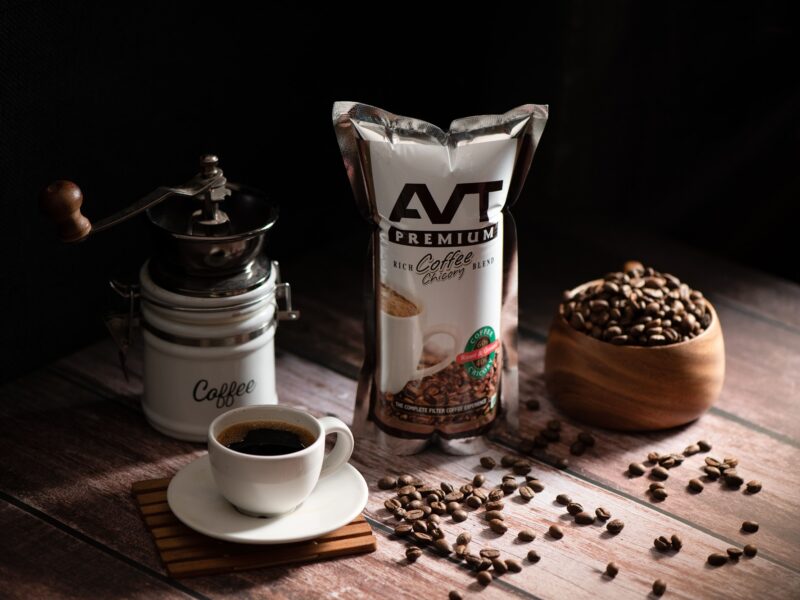
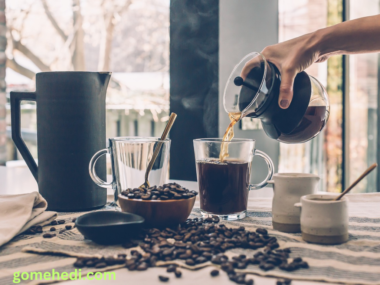
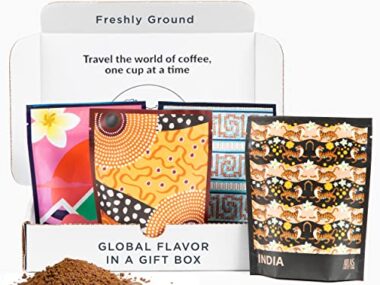
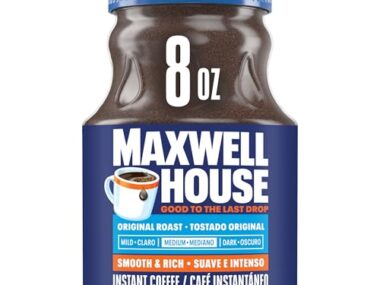
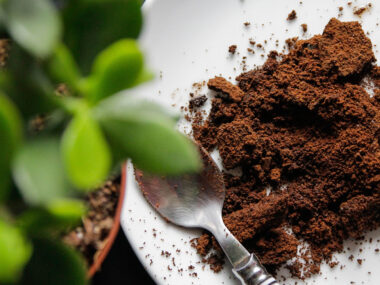



3 comments
Impressive awesome idea well done well done impressive perfect great effort excellent wonderful cool outstanding.
Nice post. I learn something totally new and challenging on websites
Thanks